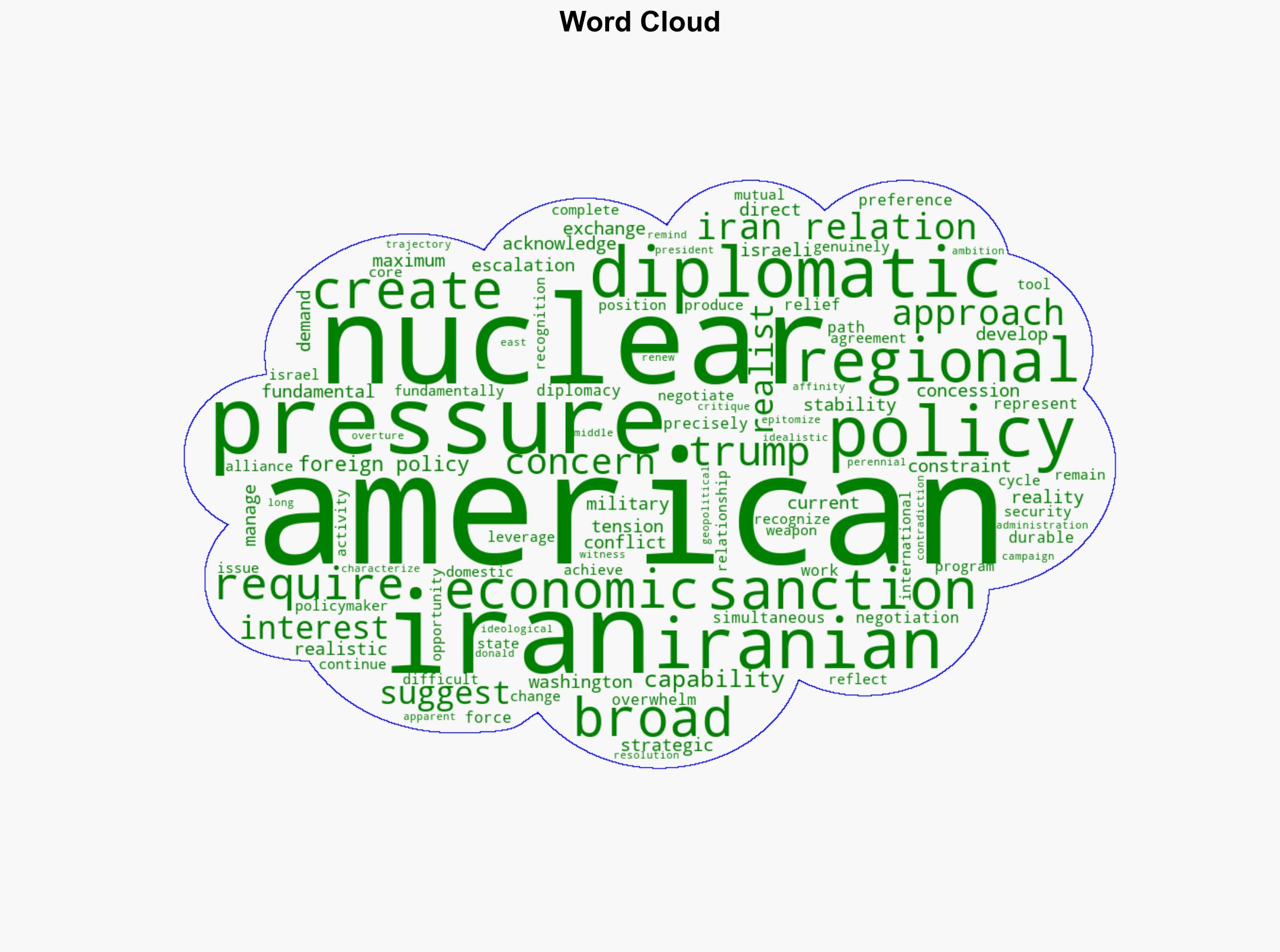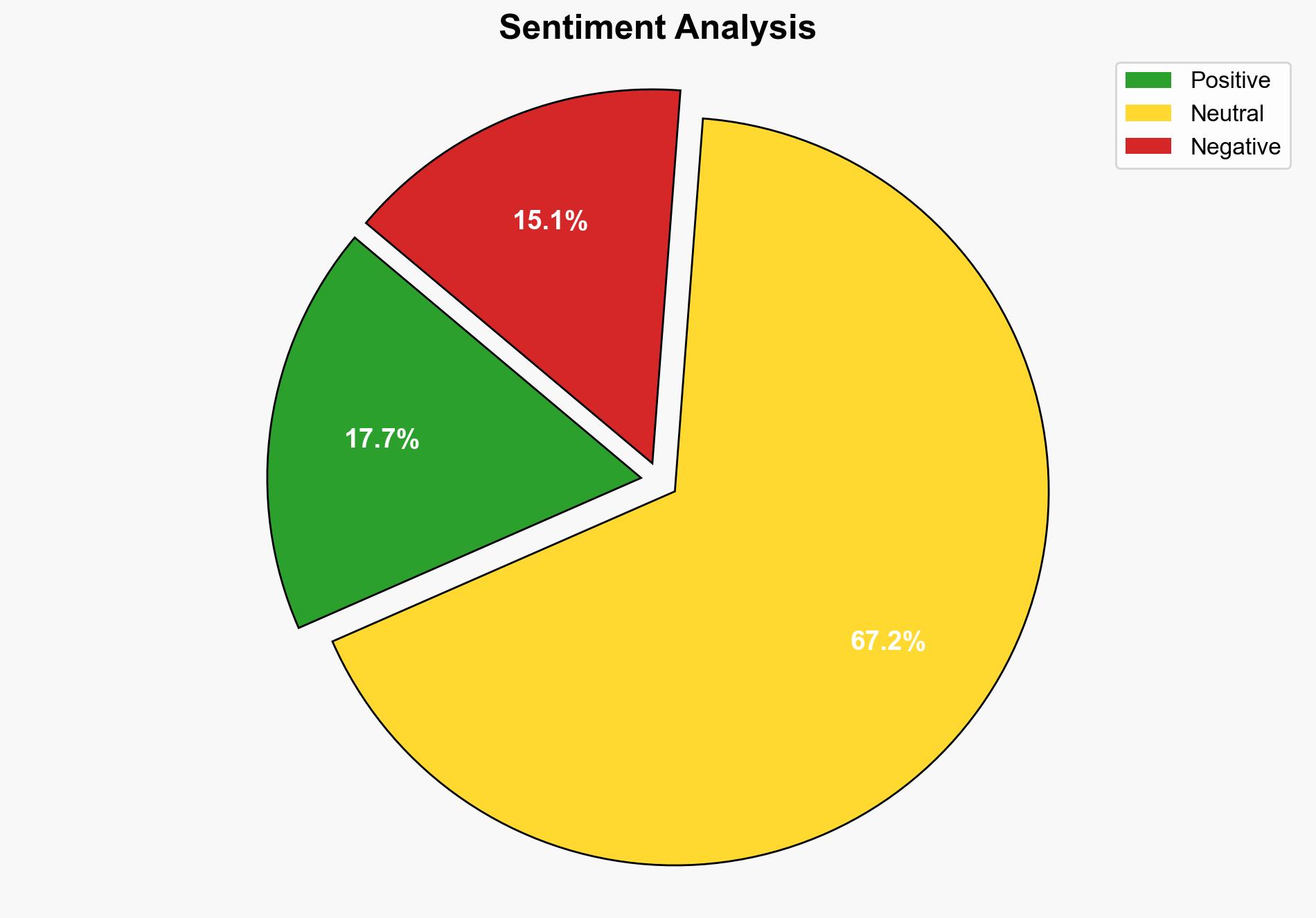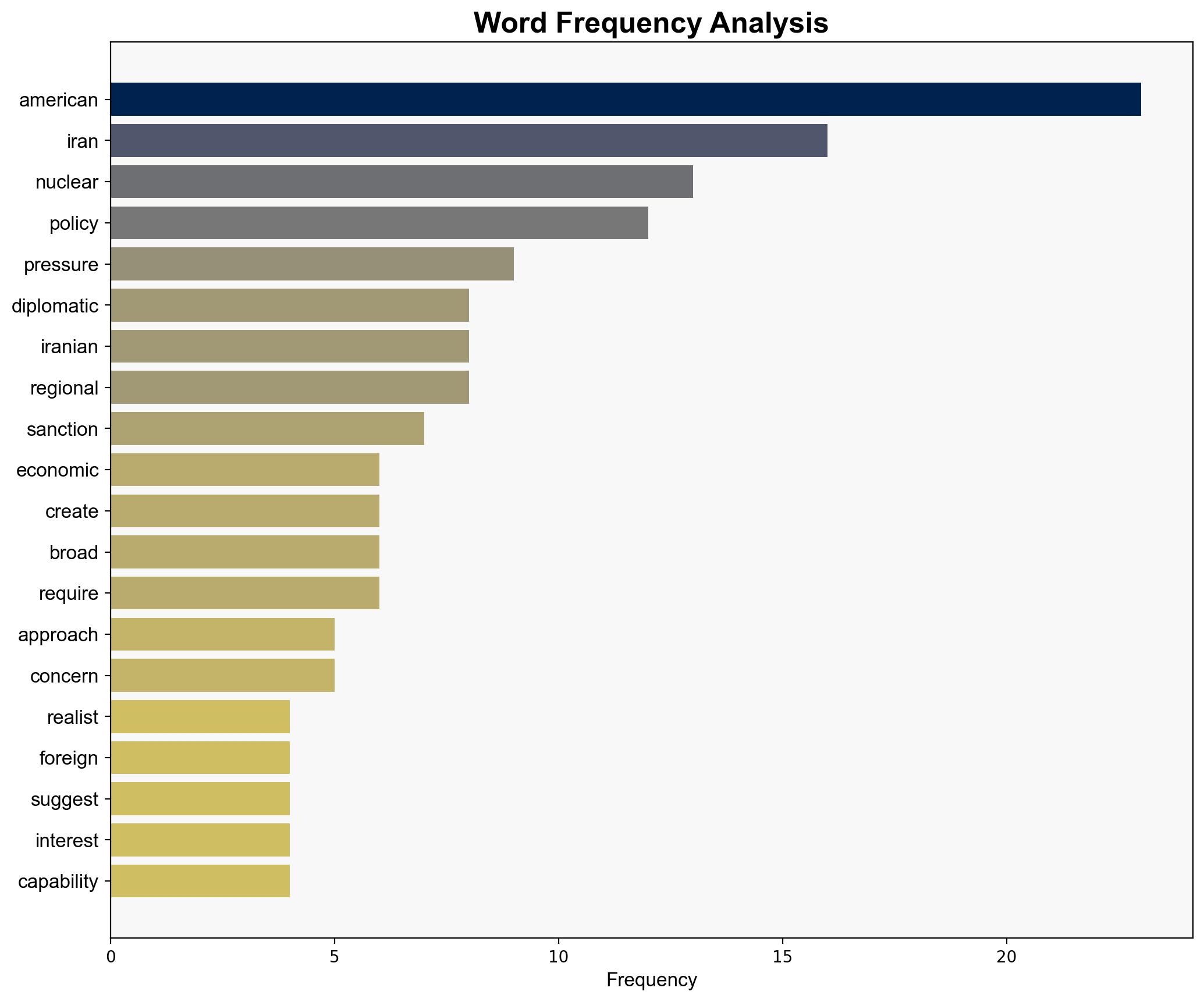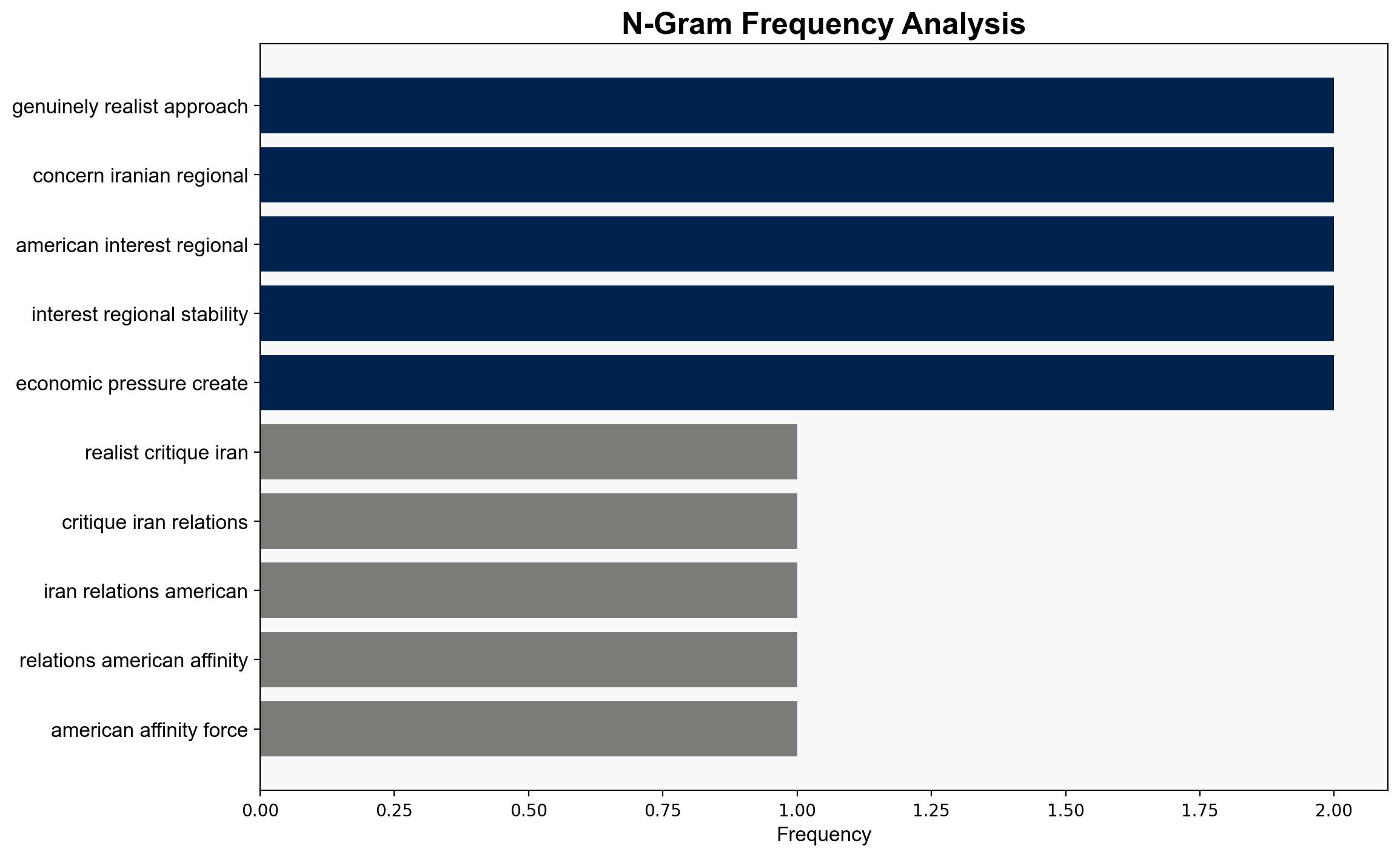A Realist Critique of USIran Relations – The American Conservative
Published on: 2025-08-08
Intelligence Report: A Realist Critique of US-Iran Relations – The American Conservative
1. BLUF (Bottom Line Up Front)
The most supported hypothesis is that the current US strategy towards Iran, characterized by maximum pressure and simultaneous diplomatic overtures, is unlikely to yield a durable resolution. This approach may escalate tensions and undermine diplomatic efforts. Confidence Level: Moderate. Recommended action includes recalibrating the strategy to focus on realistic engagement and verification mechanisms rather than coercive measures alone.
2. Competing Hypotheses
1. **Hypothesis A**: The US’s dual-track approach of maximum pressure combined with diplomatic overtures is a strategic method to coerce Iran into compliance, eventually leading to a diplomatic breakthrough.
2. **Hypothesis B**: The dual-track approach is fundamentally flawed, as it fails to recognize the resilience of Iran and the limitations of economic sanctions, potentially leading to increased tensions and reduced chances for negotiation.
Using ACH 2.0, Hypothesis B is better supported. Historical evidence suggests that sanctions alone rarely lead to policy reversals, and the current strategy may provoke Iran rather than incentivize compliance.
3. Key Assumptions and Red Flags
– **Assumptions**: Hypothesis A assumes that economic pressure will eventually force Iran to negotiate. Hypothesis B assumes Iran’s resilience and adaptability to sanctions.
– **Red Flags**: Overreliance on economic sanctions without considering Iran’s alternative economic partnerships. Potential cognitive bias in underestimating Iran’s strategic calculus.
– **Inconsistent Data**: Lack of clear evidence that maximum pressure has previously led to successful diplomatic outcomes with Iran.
4. Implications and Strategic Risks
– **Patterns**: Historical patterns indicate that coercive diplomacy without tangible incentives often fails.
– **Cascading Threats**: Increased military tensions could lead to regional instability, impacting global oil markets and security alliances.
– **Potential Escalation**: Military actions against Iran’s nuclear facilities could provoke retaliatory measures, escalating into broader conflict.
5. Recommendations and Outlook
- **Mitigation**: Shift focus towards engagement strategies that include phased sanctions relief in exchange for verifiable compliance.
- **Opportunities**: Leverage multilateral frameworks to increase diplomatic pressure and offer Iran a path to reintegration into the global economy.
- **Scenario Projections**:
– **Best Case**: Successful negotiation leading to a new agreement with robust verification mechanisms.
– **Worst Case**: Military escalation resulting in regional conflict.
– **Most Likely**: Continued stalemate with periodic escalations and diplomatic efforts.
6. Key Individuals and Entities
– Donald Trump
– Ali Khamenei
7. Thematic Tags
national security threats, regional focus, diplomatic strategy, economic sanctions, nuclear non-proliferation





